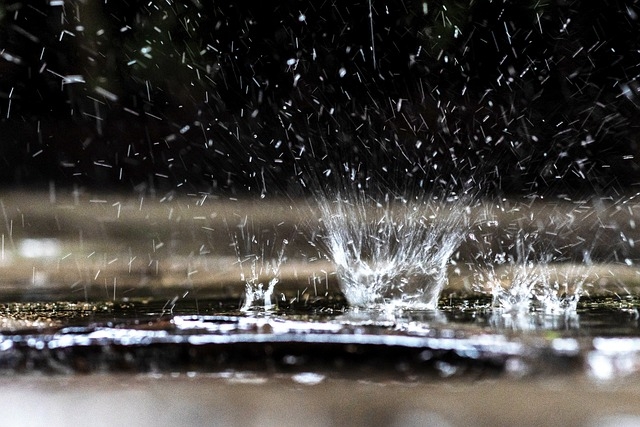
March-April; a perfect timing to discuss the water scarcity and its possible solution. One of the likely solutions is rain water harvesting (RWH) with the concept of supplying for domestic use and natural ground water recharge. These purposes; for domestic supply is need of the hour to be done by individuals while ground water recharge is for the government or the concerned department for a long-term solution.Rainwater harvesting is the collection and storage of rain, rather than allowing it to run off which could be used at destitute times.Rainwater is collected from all the surfaces;roof tops, lawns, roads, fields, etc and redirected to a tank, cistern, deep pit (well, shaft, or borehole), aquifer, or a reservoir with percolation, so that it seeps down and restores the ground water.
In the simplest way, rain water harvesting can be summarised to three steps; a source, an appropriate process/method and finally a good storage or reservoir.India as compared with the rest of the world receive a good amount of precipitation by virtue of its geographical extent and location. The issue is about adopting an appropriate method of harvesting the rainfall and storing them in a proper way. Here come the geological inputs for a long-term mitigation procedure for a successful rain water harvesting.
Petrology, Structural Geology, Geomorphology, Quaternary sedimentology, Remote sensing, Hydrogeology are some of the branches of Geology which plays a vital role in ensuring a proper volume of the source; rainfall and the best natural site for recharge of the ground water. Petrology deals in study of the rocks which helps in studying the permeability (penetrability) and porosity (voids and space) of the rocks which ultimately describes whether the rock is a good reservoir or not. In context to Manipur, majority of the rocks belongs to shale and sandstone except a little igneous rock in the eastern margin bordering Myanmar. Shales are less permeable to impermeable and less porous as compared with sandstones. Hence, sandstones are more suitable as a reservoir rock than shales and our state have enough sandstone rocks which would yield good ground water. Structural geology deals with folds, faults, tectonics which cut across the rocks. Our state belongs to the active tectonic region of the Indo Myanmar Ranges. The hills, valleys and the surface topography of a region can be understood by understanding the geomorphological parameters. The run off, the catchment of the river, its dynamics are also studied in geomorphology. All the major rivers of the state namely Barak, Imphal, Thoubal, Iril, Nambul, Ijai and other important rivers have enough catchment area that can be utilised for recharging the groundwater. The recent sediments in the Imphal Valley are required for detailed study to ascertain the better sites for extraction of ground water. Hydrogeology deals with aquifers and water tables. All these branches of geology can be interrelated, overlaid, and used categorically with the remote sensing techniques and the modern Geographic Information Systems (GIS). GIS now has a plethora of uses starting from geo-tagging any geological data and then correlating with demographic and urbanization indices.
Few scientific researches in Imphal Valley suggest that both surface water and groundwater fall below Global Meteoric Line & Local Meteoric Line meaning the source of water is the infiltration of the modern precipitation. Hence rainfall is the main source of water in the valley. Ahanllup, Chingkhu, Keithelmanbi,Loktak, Sugnu and Thanga have been suggested as the best suited aquifers by different scientists in the Imphal Valley for recharging the groundwater in the valley. Let’s not forget the issue of contamination of ground water with arsenic and fluoride which are a global issue. Arsenic contamination in several localities dominantly in Kakching area have been reported.
Keeping the pace of urbanization and urban agglomeration at Imphal City, population explosion and exponential increase in water demand, rain water harvesting with geological aspects can provide an enduring mitigation to the problem of water scarcity. The trend of global warming is no exception but the natural gift of rainfall and geographical features are a boon to our land. As told earlier, the source of rain water is abundant. Adoption of a good methodology and a good reservoir are vital in making rainwater harvesting a panacea to water scarcity. Thus, geological data and information should be incorporated while formulating any long-term plan by the concerned departments.
(Note: The contents of the article are personal views of the author and are not related to any organisation.)


